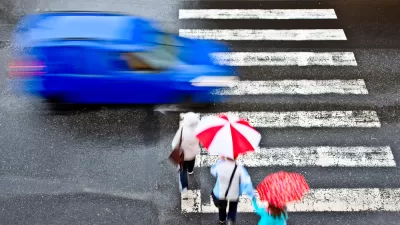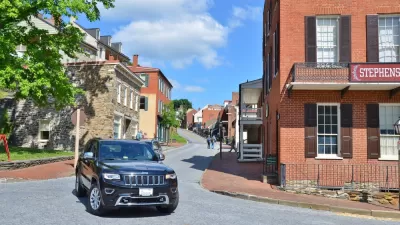Jarrett Walker offers insights into "Right of Way," a book written last year by Angie Schmitt that is influencing the traffic safety conversation and pushing the fields of planning and engineering in new directions.

Jarrett Walker discusses Angie Schmitt's book Right of Way: Race, Class, and the Silent Epidemic of Pedestrian Deaths in America–one of Planetizen's Top Urban Planning Books of 2020–which argues that our singular focus on "the standard suburban street, mass produced around every US city according to manuals that prioritized traffic flow over all other aspects of human life," has led to a "silent epidemic" of pedestrian deaths.
Today, "50% more pedestrians are dying after being struck by vehicles" than ten years ago. In her book, Schmitt points to causes such as "the dominant culture’s impulse to blame the pedestrian, which started with the invention of the crime of 'jaywalking' almost a century ago," and the "pervasive language choices made by journalists, law enforcement, and other officials that tend to exonerate the motorist no matter what the facts are." Other contributing factors include "the trend toward larger and higher-riding cars that make it harder to see a child stepping into the street" and the overly enthusiastic claims of autonomous car manufacturers.
Of course, road design still lies at the heart of the problem. In Schmitt's book, "[a] chapter called The Ideology of Flow looks at how and why streets have been designed on the principle that traffic speed simply matters more than the safety of pedestrians." Here, says Walker, "she must take on the Manual of Uniform Traffic Control Devices (MUTCD) an excellent example of the principle that the most controversial ideologies are often hidden in documents whose titles promise that they are utterly boring and irrelevant." Her book "invites the reader to think about the value of human life when it conflicts with our need or longing to go places quickly."
FULL STORY: Pedestrian Deaths are an Epidemic

Alabama: Trump Terminates Settlements for Black Communities Harmed By Raw Sewage
Trump deemed the landmark civil rights agreement “illegal DEI and environmental justice policy.”

Planetizen Federal Action Tracker
A weekly monitor of how Trump’s orders and actions are impacting planners and planning in America.

The 120 Year Old Tiny Home Villages That Sheltered San Francisco’s Earthquake Refugees
More than a century ago, San Francisco mobilized to house thousands of residents displaced by the 1906 earthquake. Could their strategy offer a model for the present?

Ken Jennings Launches Transit Web Series
The Jeopardy champ wants you to ride public transit.

BLM To Rescind Public Lands Rule
The change will downgrade conservation, once again putting federal land at risk for mining and other extractive uses.

Indy Neighborhood Group Builds Temporary Multi-Use Path
Community members, aided in part by funding from the city, repurposed a vehicle lane to create a protected bike and pedestrian path for the summer season.
Urban Design for Planners 1: Software Tools
This six-course series explores essential urban design concepts using open source software and equips planners with the tools they need to participate fully in the urban design process.
Planning for Universal Design
Learn the tools for implementing Universal Design in planning regulations.
Clanton & Associates, Inc.
Jessamine County Fiscal Court
Institute for Housing and Urban Development Studies (IHS)
City of Grandview
Harvard GSD Executive Education
Toledo-Lucas County Plan Commissions
Salt Lake City
NYU Wagner Graduate School of Public Service





























